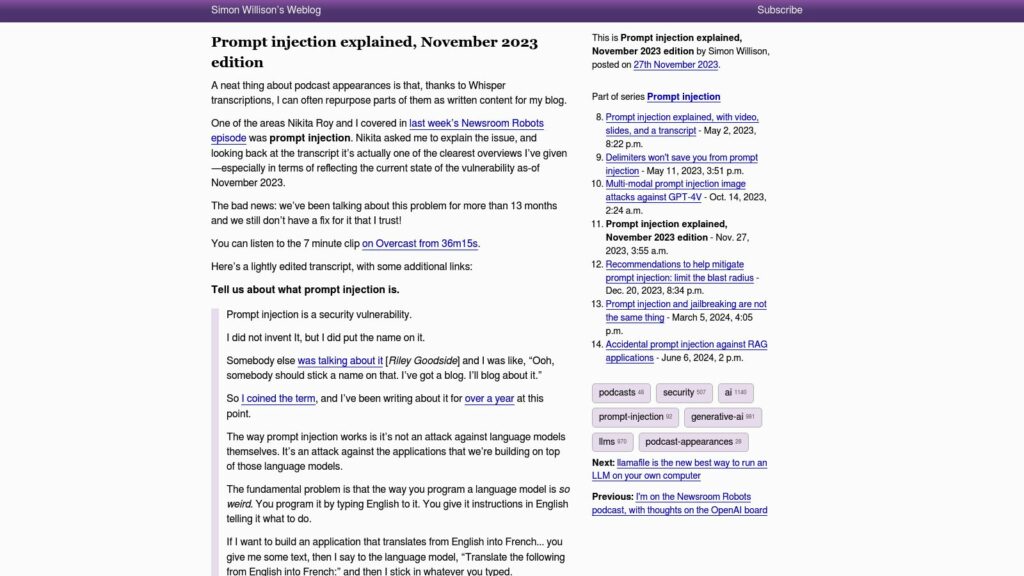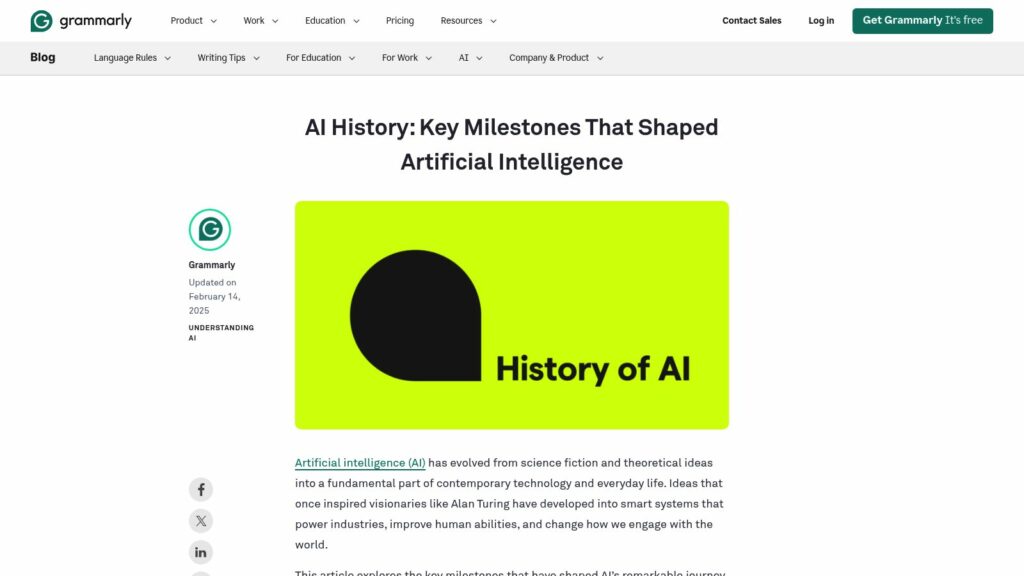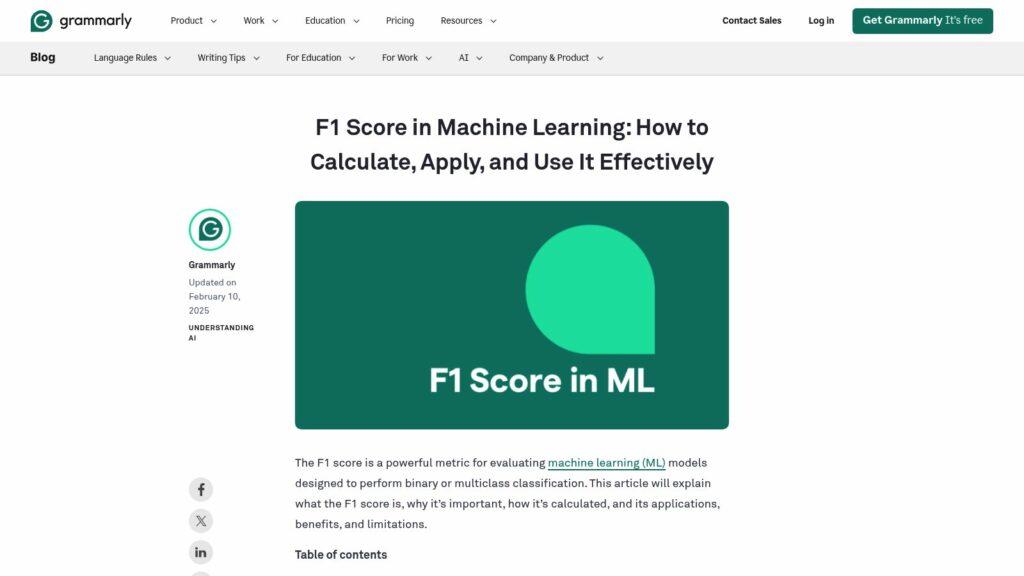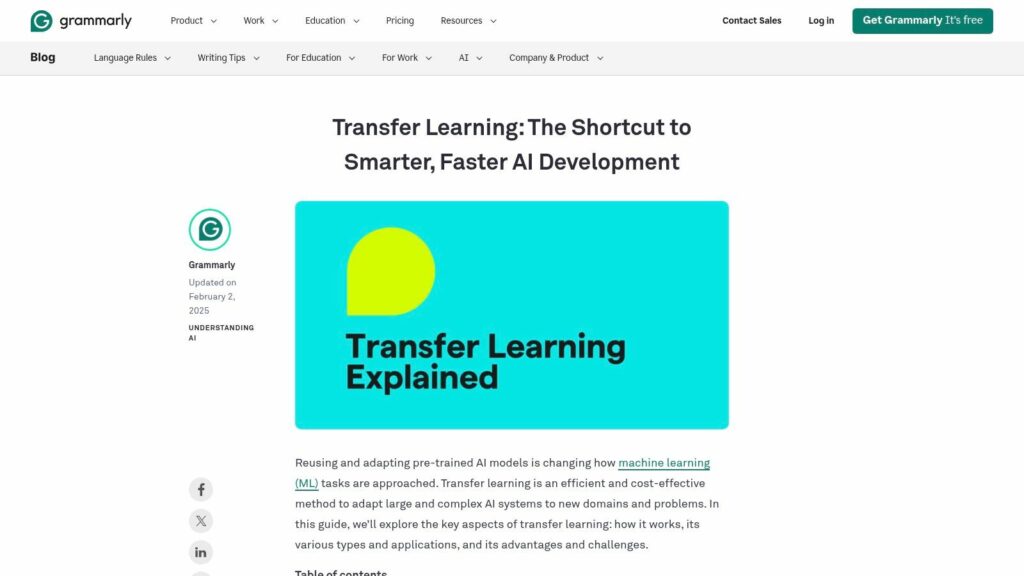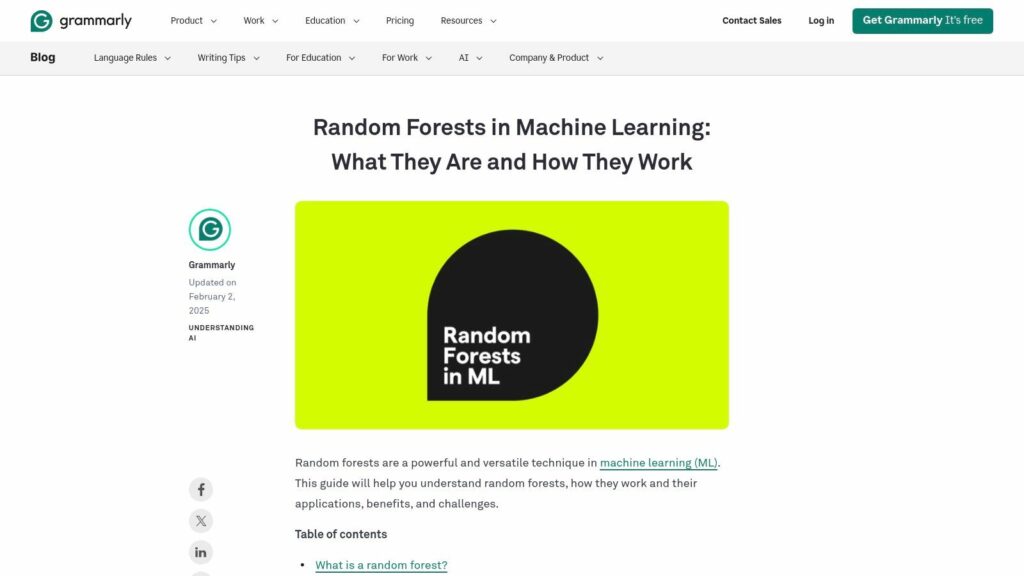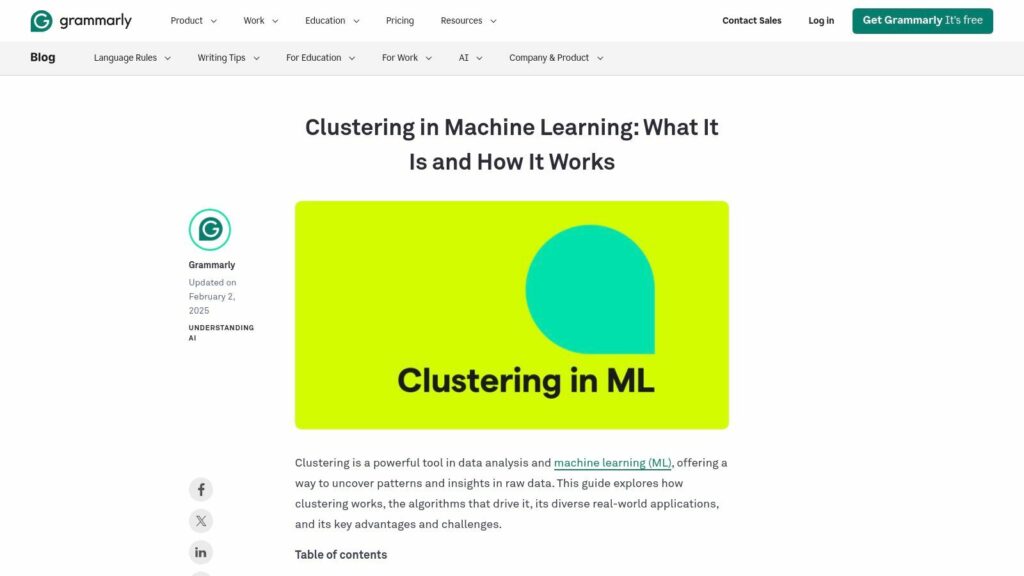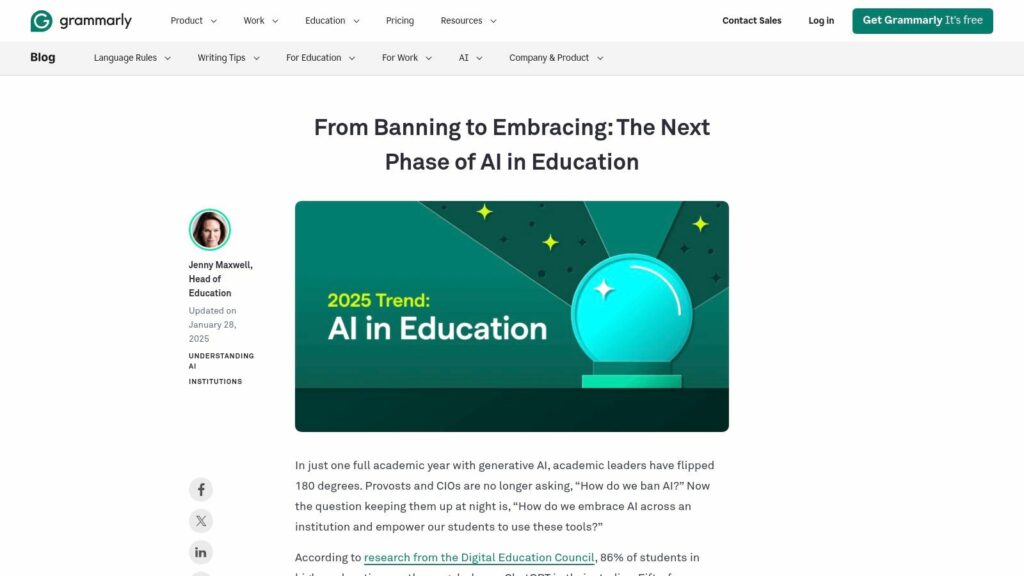What Is Artificial General Intelligence (AGI)? Everything You Need to Know
AGI (Artificial General Intelligence) is debated regarding its definition, testing, and implications for human work and creativity. This article covers AGI's meaning, history, challenges, existence, and potential applications in areas like healthcare, education, manufacturing, and finance. Key traits of AGI include autonomous decision-making, problem-solving across diverse domains, and continuous self-improvement. Ethical concerns such as bias and legal liabilities are discussed, along with the future impact of AGI on industries and society. AGI differs from narrow AI and generative AI; its existence remains unconfirmed as current AI does not yet meet AGI criteria.
https://www.grammarly.com/blog/ai/what-is-general-artificial-intelligence/
